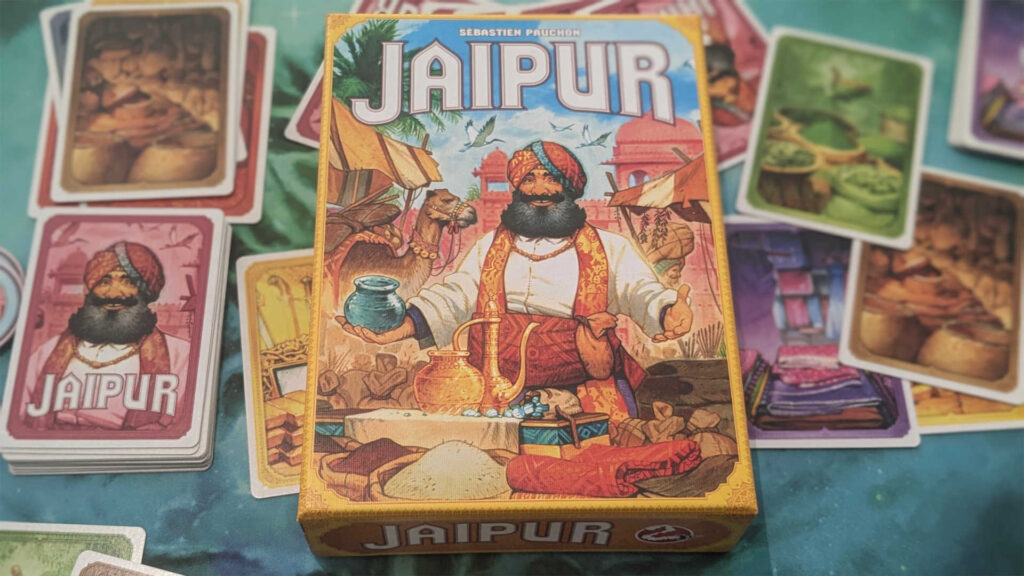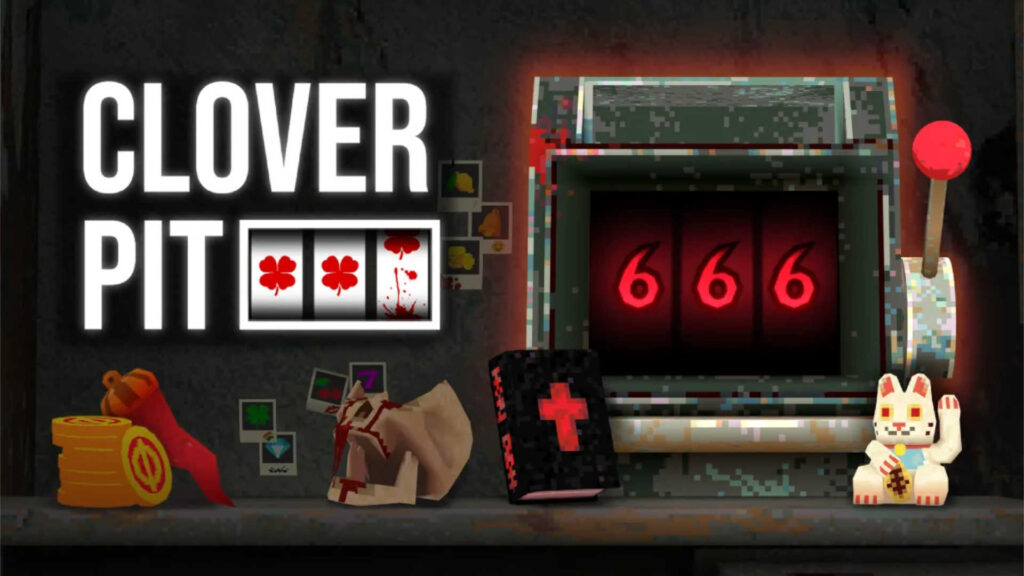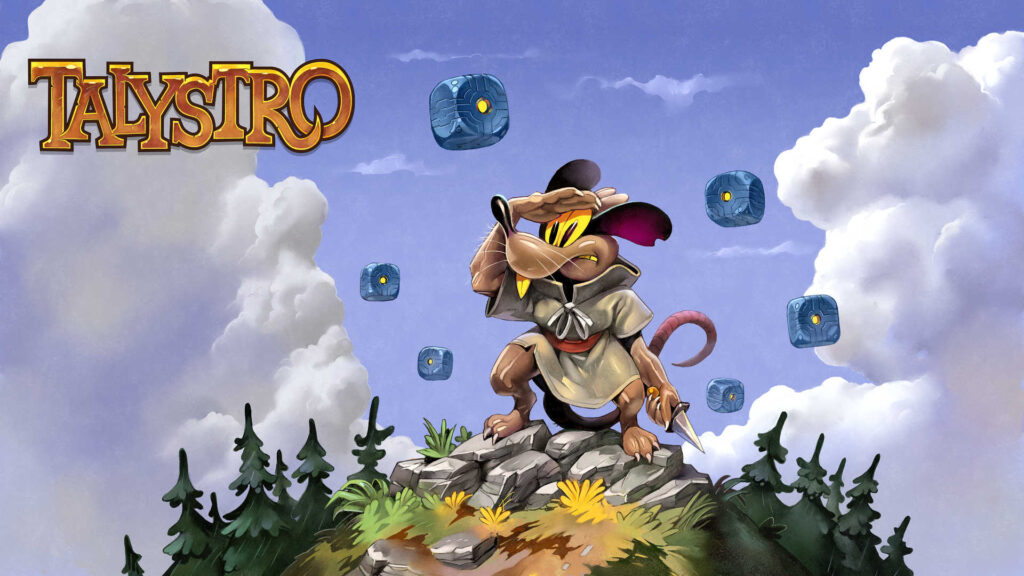Initially released in 2009, Jaipur, from Space Cowboys and Asmodee, is a multiple award-winning, hand management and trading game for two players. Its 2nd edition was released, with new art and slightly better quality tokens, a decade later. Though still a hugely popular game, it is one that still seems to have flown under the radar of many players. So let’s take a look at why Jaipur remains a fixture on store shelves, and tabletops, to this day!
Table of Contents
ToggleGetting Started With Jaipur
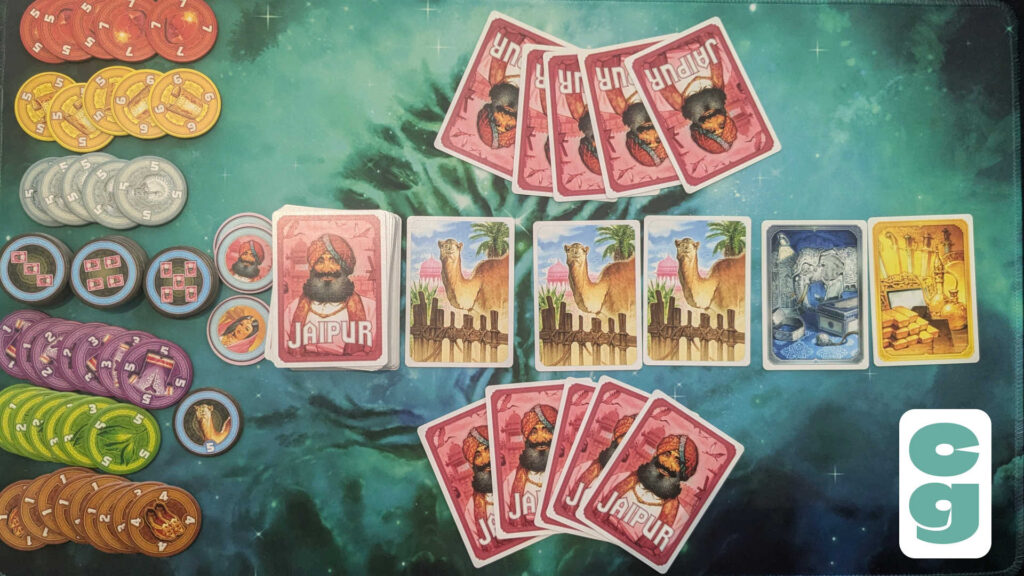
There’s not a huge deal of difference between Jaipur’s first and second editions, but it’s the 2nd Edition that’s currently available, and that’s the one we’ve been able to check out for this review. Unlike many other games we cover, Jaipur’s a straightforward, small box game for two players that requires no further investment! Jaipur is a game with minimal rules and a small number of components, which means it takes no time at all to get to grips with; once you’ve got the game and an opponent, you’re just about ready to go.
To set up, sort each of the goods tokens into piles by type, in descending order of value (so the highest value token of each type of good is on top, with the lowest point value token on the bottom of each pile); the rules also advise spreading the piles out, so players can clearly see the values on the remaining tokens. Three camel cards are placed in the center of the play area, with the deck shuffled and two cards drawn from it, then placed next to the three camel cards, to create and fill the five-space market row.
Players are dealt five cards each, and any camels in their hand are placed in front of them immediately to create their herd. Bonus tokens, the camel token, and the three Seals of Excellence are placed in the play area. Then the game can begin.
How to Play Jaipur
In Jaipur, each player is competing to become the Maharaja’s personal trader, and this is accomplished by having the most rupees. Each round, players will be acquiring, then selling, a variety of goods (of which there are six types), as well as herding and trading camels.
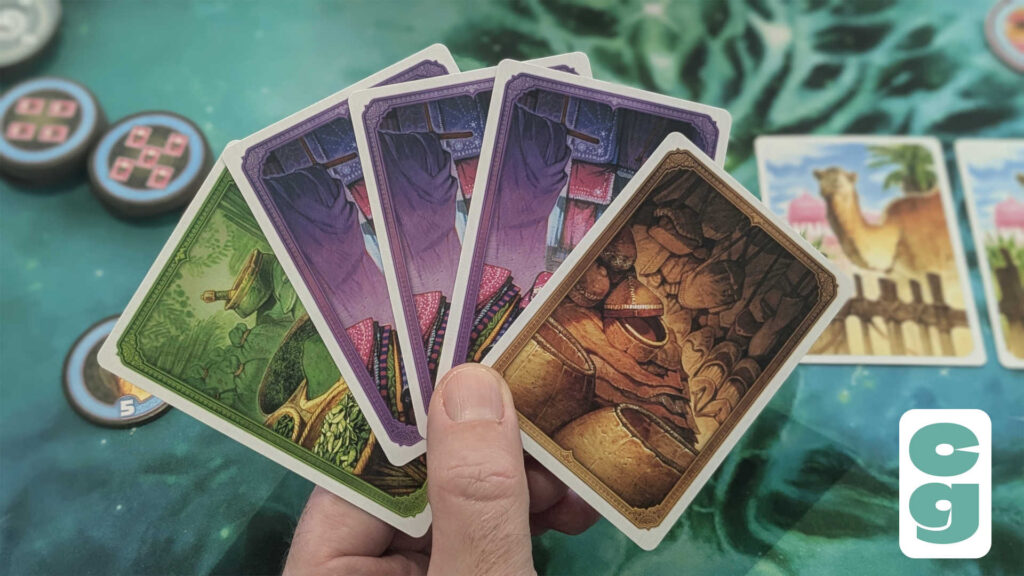
The gameplay of Jaipur is deceptively simple; on your turn, you’ll either take cards from the market row, or sell cards for goods tokens. Just to make that even clearer: you either take cards or sell, never both, on a turn.
Of course, there’s slightly more to the game than that. When taking cards, if you take one single good into your hand (though you have a hand limit of seven cards), you then replace the missing good from the market with the top card of the deck. Or you can take all of the camels from the market, which are added in front of you, not in your hand, as your “herd” (note that you must take all of them, and they don’t count towards your hand limit). Finally, if you want to take multiple goods (and you can take whatever type you want, even multiple types of good at once), you exchange them with cards from your hand (or camels in your herd, with a combination of the two “payment: methods also permitted), taking care to ensure that you’re exchanging the same number of cards.
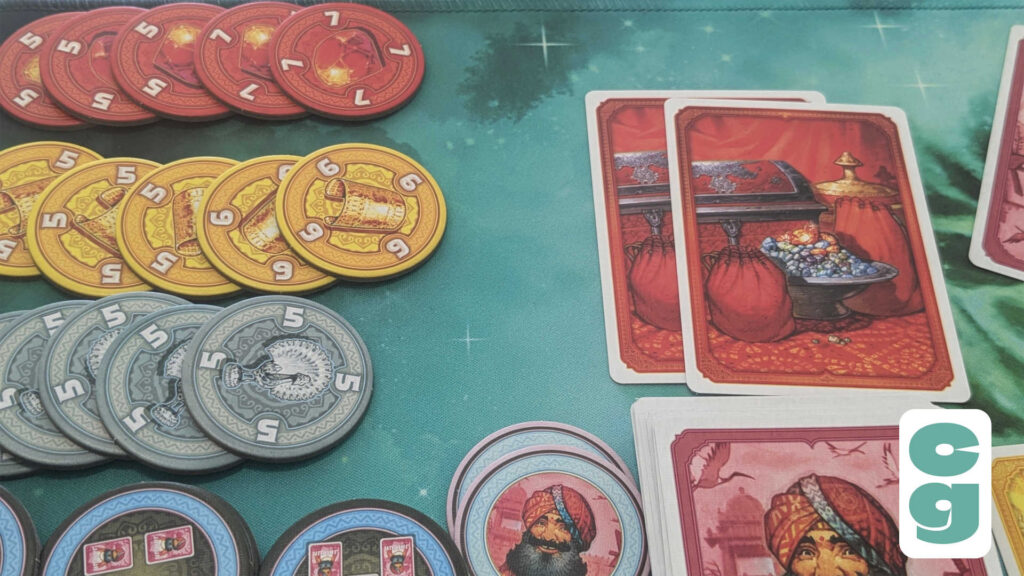
When you sell cards, you can only sell one type of good per turn, but you can sell as much of that specific good as you have. When you do, you take the same number of tokens of that type from the corresponding goods tokens pile; highest value first, in descending order. For example, selling the two red diamond cards shown above would result in the player receiving the two 7-point red diamond tokens in return.
If you manage to sell three or more of the same type of good at once, you’ll also earn a bonus token; if you sell three goods, you’ll get a three-card token, and you’ll get the four- and five-card tokens for selling four and five goods, respectively.
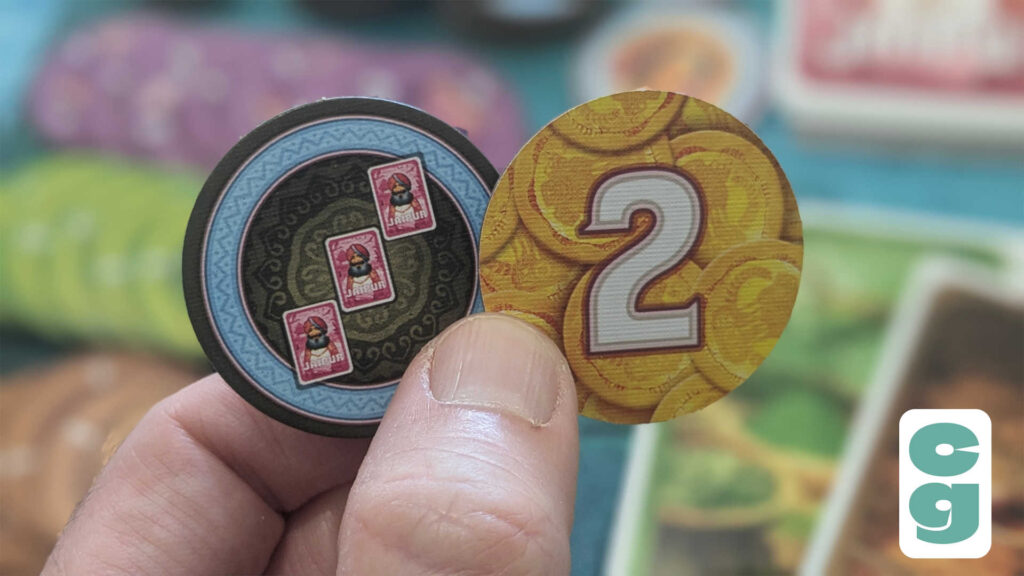
These tokens each have a secret bonus point value, which you’ll reveal at the end of the game (an example is the three-card token, the front and back of one shown in the above image).
One more rule: if you’re selling one of the three most expensive goods in the game (which are silver, gold and diamonds, pictured below in that order), you can’t simply sell one good; these must be sold with a minimum of two goods per sale.
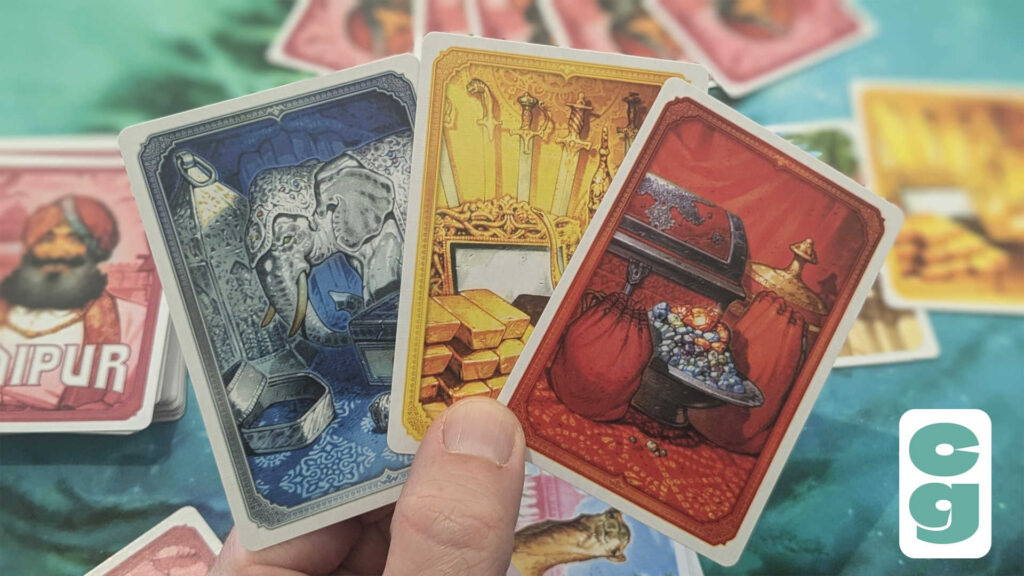
Once three types of goods token piles have been depleted, or there aren’t enough cards left in the deck to restock the market row, the round ends. Players count up the points on all of their goods tokens (including any bonus tokens they collected), and there’s also a five-point bonus for the player who has the most camels in their herd at the game’s end. The player with the most points wins the round, taking a Seal of Excellence token. As soon as a player has two Seal of Excellence tokens, they win the game, and the Maharaja’s favor!
Is Jaipur Fun to Play?
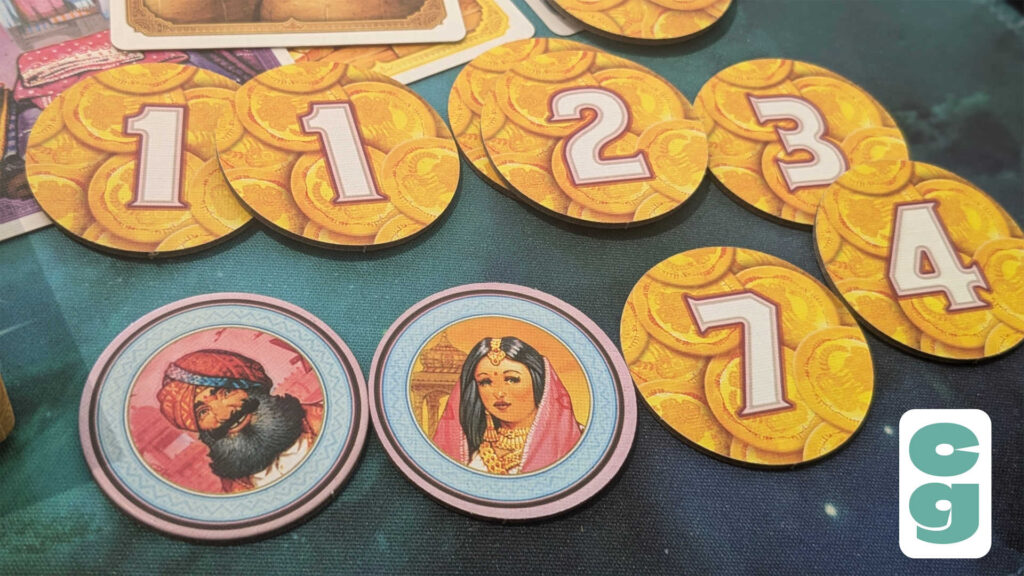
With rounds lasting around 10 minutes and entire games taking between 20-30 minutes in total, Jaipur certainly isn’t a game that outstays its welcome. The art in the 2nd edition, by Vincent Dutrait, is colorful, bold and appealing. Both the cards and tokens are of a high quality; they feel resilient enough to stand up to many, many repeat plays (and you will be playing Jaipur again and again!).
Despite the simplicity of its mechanics, Jaipur is a richly compelling game with a surprising amount of strategic depth. It’s is also blessed with an element that’ll be familiar to many players of weightier, or Euro-style games, and that’s having a limited number of actions (in this case, one per turn), but so much that you want to do.
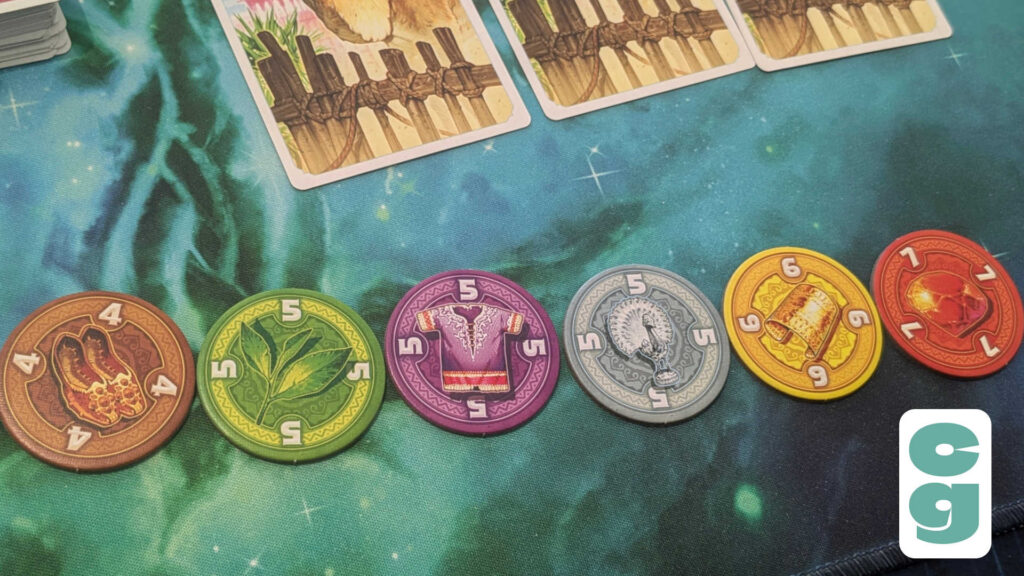
Having the higher valued tokens taken first means that there’s always the agonizing decision on whether to wait until you’ve built up enough of one good to earn a bonus when you sell, or to simply sell what you have as soon as you can, to stop your opponent from getting their hands on the highest point values before you do. Though you’re limited to either taking or selling goods (and let’s not forget trading camels!) on your turn, the number of options that actually gives you at any one time is genuinely impressive, and gives Jaipur a very addictive quality; its gameplay never seems to get old.
It’s a game that can be learned and played strategically for players of just about any age or experience level, and every time I’ve played, the result of each round has been incredibly close, with players generally ending up within a few points of each other. The secret bonus points, and the camel bonus (for the largest herd at the end of the round) keep things very interesting, right up until the final scores are calculated.
The Card Gamer Verdict
An immediately appealing and accessible game in terms of its design and overall aesthetic, Jaipur feels like the perfect two-player game. There’s a reason why Sébastien Pauchon’s design feels so timeless, and why Jaipur earned an updated 2nd edition after already being available for a decade.
There are very few games which I feel like I’ll always be enthusiastic to play, and even fewer that I know I’ll always enjoy and want to continue playing even after finishing a game. However, Jaipur fits that description for me, and I’ve yet to meet anyone who hasn’t succumbed to its simple, but surprisingly rich (and often agonizing!) strategic options.
With the entire game being small enough to take just about anywhere, at a price that definitely won’t break the bank, Jaipur offers great value for money in a compact, complete box. Its only weakness is that it doesn’t support more than two players, but of course plenty of other games can fill that role. Jaipur is a timeless, modern classic, and has definitely earned every bit of its critical and commercial success.
If you’re interested in family friendly games for more than two players, check out our reviews of Flip 7 and Doomlings.


